|
 If Spring is for the birds then insects rule Summer. Whereas
a dedicated birder may observe one hundred species of birds
on a good May day in Utah, an insect watcher’s species
list could easily tally in the thousands on a hot July day.
That is, if the watcher can bypass trying to squash many of
these hard-shelled, joint legged creatures.
If Spring is for the birds then insects rule Summer. Whereas
a dedicated birder may observe one hundred species of birds
on a good May day in Utah, an insect watcher’s species
list could easily tally in the thousands on a hot July day.
That is, if the watcher can bypass trying to squash many of
these hard-shelled, joint legged creatures.
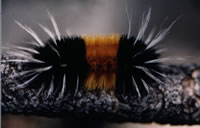 More
than 100,000 insect species reside in the United States. Many
are the Rodney Dangerfield’s of the wildlife world -
“they don’t get no respect.” In fact, humans
spend a great deal of money, time and energy, somewhere in
the neighborhood of four billion dollars annually, in their
attempt to rid the planet of insects. But, time is on the
side of insects - insects have been buzzing about on this
planet long before the creation of humans was but a mere boardroom
concept. More
than 100,000 insect species reside in the United States. Many
are the Rodney Dangerfield’s of the wildlife world -
“they don’t get no respect.” In fact, humans
spend a great deal of money, time and energy, somewhere in
the neighborhood of four billion dollars annually, in their
attempt to rid the planet of insects. But, time is on the
side of insects - insects have been buzzing about on this
planet long before the creation of humans was but a mere boardroom
concept.
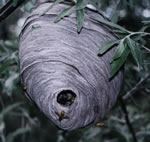 Insects
occur all over the Earth and may be found in every habitat
type. Except for the ocean, where they haven’t really
gotten well established, these living members of the Animalia
kingdom solved the difficult problem of flight long before
the first feathered dinosaur attempted an Icarius swan dive. Insects
occur all over the Earth and may be found in every habitat
type. Except for the ocean, where they haven’t really
gotten well established, these living members of the Animalia
kingdom solved the difficult problem of flight long before
the first feathered dinosaur attempted an Icarius swan dive.
Take dragonflies, for example. Some 350 million years ago,
the sky belonged to the dragonfly. The archaic prototype,
called Meganuera, stretched out some 30 inches and was the
Red Baron of those Pennsylvanian Period skies. Today’s
dragonflies are similar, smaller replicas of this historical
giant, and their method of location is still an affront to
the laws of aerodynamics.
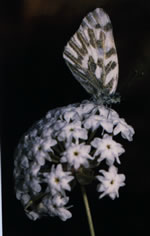 Dragonfly
wings do not beat in unison; the two sets of wings move in
opposing directions, which reduces flight efficiency. Large
muscles drive the wings (these muscles may equal one-quarter
of the total body weight) and the muscle is connected directly
to the thorax on either side of the joint. This “direct
drive” system that controls muscular energy, reduces
the speed at which the wings may beat. At 20-30 beats per
second, dragonfly wings beat slower than those of a hummingbird.
But just try and catch one. Their helicopter like movements
make them a difficult target. Dragonfly
wings do not beat in unison; the two sets of wings move in
opposing directions, which reduces flight efficiency. Large
muscles drive the wings (these muscles may equal one-quarter
of the total body weight) and the muscle is connected directly
to the thorax on either side of the joint. This “direct
drive” system that controls muscular energy, reduces
the speed at which the wings may beat. At 20-30 beats per
second, dragonfly wings beat slower than those of a hummingbird.
But just try and catch one. Their helicopter like movements
make them a difficult target.
Butterflies, on the other wing, have very slow wing beats
but they beat together to create a more efficient and stronger
flight system. This Lindenburgian system enables certain species
to perform phenomenal feats of flight endurance. Every spring,
painted ladies (butterflies, not madams of the night) travel
close to 3,000 miles on their annual migratory route. Along
that route, these butterflies will encounter busy air spaces
that would make the toughest of all flight controllers shudder
in horror.
The mix of flying insects - mosquitoes, lady bird beetles,
wasps, damsel flies, house flies, and many others, at times
makes for some crowded aerial conditions. Throw some predators
into this mix - white-throated swifts, common nighthawks,
violet-green swallows, big-eared bats, and watch out, it’s
an aerial eat-or-be-eaten world.
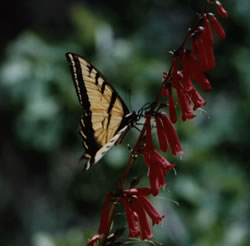 Besides
being fodder for each other or for other groups of animals
like fish, amphibians, reptiles and birds, insects play a
huge role in terms of pollination. Just think about all the
crops grown commercially or in your garden that depend upon
the transfer of pollen from plant to plant. Insects fulfill
the role of transporter quite well; without the intervention
of insects, many plants would remain sterile, unable to set
seeds. These services greatly outweigh what humans spend annually
in their attempts to reduce insect populations. Of course,
flowers have dressed themselves up to attract these insects,
and often provide rewards of nectar or pollen for these services. Besides
being fodder for each other or for other groups of animals
like fish, amphibians, reptiles and birds, insects play a
huge role in terms of pollination. Just think about all the
crops grown commercially or in your garden that depend upon
the transfer of pollen from plant to plant. Insects fulfill
the role of transporter quite well; without the intervention
of insects, many plants would remain sterile, unable to set
seeds. These services greatly outweigh what humans spend annually
in their attempts to reduce insect populations. Of course,
flowers have dressed themselves up to attract these insects,
and often provide rewards of nectar or pollen for these services.
So as July roles in on wave of heat, take time to observe
some of the numerous insects that you encounter in your garden
or on a canyon hike. A hand lens or inverted pair of binoculars
will help to provide a closer look at the amazing diversity
of these creatures. And then, maybe they won’t bug you
as much (pun intended).
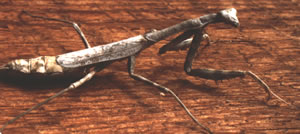
|